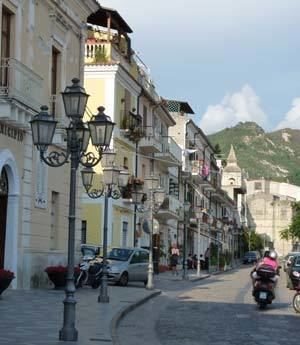Demonym(s) Amanteani Postal code 87032 | Elevation 50 m (160 ft) Area 28 km² Local time Monday 4:09 PM | |
 | ||
Weather 18°C, Wind E at 13 km/h, 66% Humidity | ||
Amantea (Greek: Amanthea) is a town and comune in the province of Cosenza in the Calabria region of southern Italy.
Contents
Map of 87032 Amantea Province of Cosenza, Italy
It is a tourist centre on the southern Tyrrhenian Sea coast.
History
Amantea appears as a centre of its own in the 7th century, although traces of human presence from pre-historical times onwards have been found in the area. In 839 the Arabs captured it, being ousted by the Byzantines in 889. Later it was under Norman domination. In 1269 the Amanteani rebelled against the Angevines in the name of Conradin of Hohenstaufen, but were besieged by the French and defeated.
The town is mostly famous for the long resistance of its inhabitants against the French troops under Joseph Bonaparte who, in 1806–1807, attempted to conquer its castle.
In July 1810, three British warships, the frigate HMS Thames, HMS Weazel, and Pilot, captured or destroyed a convoy of 31 coasting vessels that were carrying stores and provisions from Naples to Murat's army at Scylla. Seven large gunboats, four scampavias, and an armed pinnace protected the convoy. At the approach of the British warships the convoy and its escorts beached themselves in front of Amantea, but the British were still able to capture almost all the vessels, and destroy half a dozen, all while suffering only minimal casualties.
